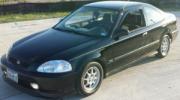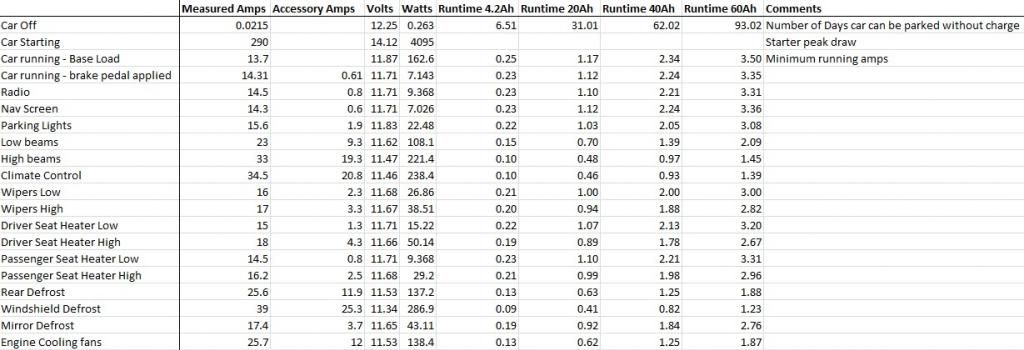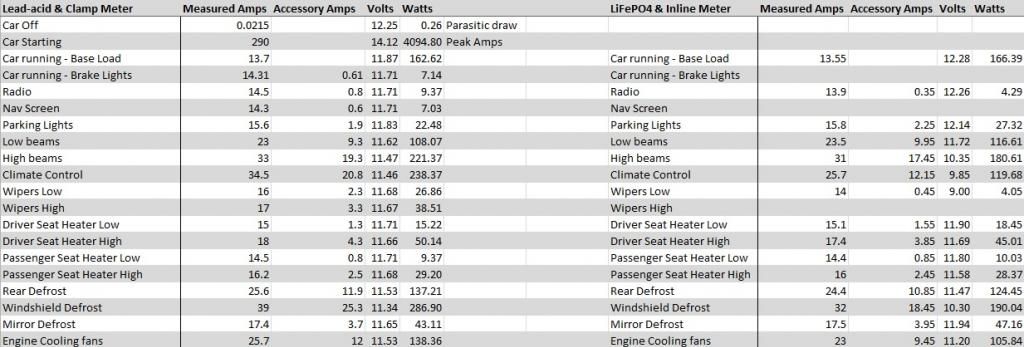 10-06-2014, 09:04 AM
10-06-2014, 09:04 AM
|
#11 (permalink)
|
|
5 pin sensor
Join Date: Sep 2014
Location: Dallas
Posts: 350
Thanks: 38
Thanked 73 Times in 56 Posts
|
The alternator functions separately from the cars computer. You just need to stop power from getting to the regulator from the battery on the plug.
Alternators can be tested independently at part stores to simulate all voltage ranges. All they do is supply it with a constant power source and vary the load to the regulator.
While helpful the description of the computer controlling the alternator is incorrect, voltage to the regulator does that
The simplest way would be to wire a switch into the alternator harness to disconnect the feed signal to the voltage regulator.
__________________
Current: 1997 civic lx
Past: 1998hx/1996hx/1997lx/1997hx Cali/1997hx
OG lean burn member
 My civic thread
My civic thread

Last edited by Chrysler kid; 10-06-2014 at 10:47 AM..
|
|
|

|
 Today Today
|
|
|
|
 Other popular topics in this forum...
Other popular topics in this forum...
|
|
|
|
 10-07-2014, 06:51 PM
10-07-2014, 06:51 PM
|
#12 (permalink)
|
|
Master EcoModder
Join Date: May 2012
Location: USA
Posts: 2,643
Thanks: 1,502
Thanked 279 Times in 229 Posts
|
Thanks, makes sense why with key on I see 12.5 volts and key off 11.7 if the eld or alt has a low and high output mode.
|
|
|

|
 10-14-2014, 07:02 AM
10-14-2014, 07:02 AM
|
#13 (permalink)
|
|
Human Environmentalist
Join Date: Aug 2010
Location: Oregon
Posts: 12,985
Thanks: 4,370
Thanked 4,533 Times in 3,484 Posts
|
I found that alternator output can be interrupted by unplugging the 4-pin connector. The dash displays a message saying to check the charging system, but the message goes away after the 4-pin connector is plugged back in.
I purchased a used 4-pin connector and will test to see which wires must be disconnected to kill the alternator output. Then I'll use the spare connector to splice in a switch, preserving the original wire harness.
This is what the 4-pin connector looks like.

Below is a spreadsheet showing measured electrical loads of each accessory, and an estimated run time in hours that the car can be driven. Measurements were taken with a digital clamp meter.

My goal is to have 90min of alternator-free run time, so a 40 Ah LiFePO4 battery seems appropriate.
Last edited by redpoint5; 10-14-2014 at 01:41 PM..
|
|
|

|
|
The Following User Says Thank You to redpoint5 For This Useful Post:
|
|
 10-14-2014, 10:01 PM
10-14-2014, 10:01 PM
|
#14 (permalink)
|
|
Human Environmentalist
Join Date: Aug 2010
Location: Oregon
Posts: 12,985
Thanks: 4,370
Thanked 4,533 Times in 3,484 Posts
|
I wanted to test my small 4.2 Ah LiFePO4 battery and inline watt meter, so I repeated the test procedure above. The TSX was started on the lead acid battery, then I moved electrical over to the LiFePO4 battery, and disabled the alternator by unplugging the 4-pin connector.
Using this LiFePO4 battery and this inline watt meter, I recorded the results below. They are displayed on the right half of the spreadsheet and compared to the original numbers on the left. Toward the end of testing, the LiFePO4 became warm and puffy, and voltage began to sag. It's unknown why this happened, as peak current was under 33 amps. Also note that some of the higher drawing accessories pulled less current in the second test. This is likely due to battery issues and inadequate grounding from the 3 alligator leads I used.

Last edited by redpoint5; 10-14-2014 at 10:09 PM..
|
|
|

|
 10-15-2014, 09:46 PM
10-15-2014, 09:46 PM
|
#15 (permalink)
|
|
Master EcoModder
Join Date: May 2012
Location: USA
Posts: 2,643
Thanks: 1,502
Thanked 279 Times in 229 Posts
|
Bad connections can cause excess draw. If you are trying to conserve, why are you running all the defrosters, heaters, climate controls, etc? I only use my mirror defrosters as needed and the front windshield one to boot. I have the rear windows unplugged. Rest of the time I drive with the windows open, open part way or closed and wear a jacket.
Yes, under a load the pouches poof up or swell. They do that too while charging. Its not a good sign, you are either over charging or over discharging them.
|
|
|

|
 10-15-2014, 10:54 PM
10-15-2014, 10:54 PM
|
#16 (permalink)
|
|
Human Environmentalist
Join Date: Aug 2010
Location: Oregon
Posts: 12,985
Thanks: 4,370
Thanked 4,533 Times in 3,484 Posts
|
Quote:
Originally Posted by Cobb

why are you running all the defrosters, heaters, climate controls, etc?
Yes, under a load the pouches poof up or swell. They do that too while charging. Its not a good sign, you are either over charging or over discharging them.
|
I ran each component individually to determine their individual draw so that I can size a battery system appropriate to my anticipated accessory use.
My puffed up battery was due to over-discharging, and it returned to normal appearance after charging. The 4.2 Ah battery took 4.1 A to charge, which I performed at a rate of 500 mA. Hopefully it didn't sustain critical damage.
That said, I now plan to purchase a 40 Ah LiFePO4 battery and replace the lead acid. This should provide the 90 minutes of run time I would like to get. I'm waiting for a connector to the alternator to arrive so I can test my alternator disable switch before I go spending a lot of money on a battery.
If I achieved a 5% improvement in fuel economy by disabling the alternator, I would save $80/year. It's not a lot, but it could eventually cover the added cost of batteries, charger and electricity. |
|
|

|
 10-18-2014, 03:15 PM
10-18-2014, 03:15 PM
|
#17 (permalink)
|
|
Human Environmentalist
Join Date: Aug 2010
Location: Oregon
Posts: 12,985
Thanks: 4,370
Thanked 4,533 Times in 3,484 Posts
|
I don't know how I missed the important info in California98Civic's threads, ( here and here) and steffen707 ( here), but most of the info I needed to begin testing and constructing my alternator kill switch is discussed there.
I learned today that my alt kill may be a little easier than what is described in the threads linked above. With an ammeter connected to the alternator output and voltmeter connected to the battery, I started the TSX and took measurements.
With the battery and alternator connected normally, I immediately saw an output current of 30 amps and just above 14v at the battery. While the car was still running, I disconnected the 4-pin connector at the alternator and observed the amps drop to 0, and the voltage drop to ~12v. This shows that I can switch off some wire (or wires) on the alternator while it is running and disable it. It will not maintain the field coil voltage without being plugged in.
Next, with the 4-pin alternator plug disconnected, I revved the engine to 4,000 RPM to see if it would self excite and resume charging. I observed that the voltage did not rise, and there was no output from the alternator.
Fantastic! All I have to do is rig a DPST switch to 1 or 2 wires from the alternator to kill it. Regardless of engine RPM, or if the alternator was previously operating, I can disable the alternator and re-enable it with a simple switch.
I would assume all late model Honda's (perhaps 2004 and later) behave the same way, although you will need to test for yourself.
My extra 4-pin connector has arrived, so all I have to do is purchase some small spade connectors and wire in the switch when it arrives.
With the success I've had, I'm beginning to think bigger. My dream setup would involve a microcontroller that monitors battery voltage and enables the alternator automatically if it drops below a certain threshold. Even more, it would monitor for DFCO and enable the alternator to charge when the energy from deceleration is free. I would somehow have to monitor engine RPM and throttle position and make an If Then statement that says something like;
If RPM > 1500 AND throttle position < 1% ENABLE relay to switch on alternator.
ELSE DISABLE switch on alternator
I'm just not sure how the protocol on OBD2 systems work, or what voltage they run for signaling. The Microcontroller I have uses 5v as high and 0v as low, with the threshold somewhere around 2.5v.
If I need an additional IC to communicate with the car, it should be cheap since an ELM237 can be had for $5 including shipping. Thoughts?
Last edited by redpoint5; 10-18-2014 at 03:35 PM..
|
|
|

|
 10-18-2014, 04:05 PM
10-18-2014, 04:05 PM
|
#18 (permalink)
|
|
Master EcoModder
Join Date: Jan 2008
Location: Sanger,Texas,U.S.A.
Posts: 16,447
Thanks: 24,487
Thanked 7,415 Times in 4,804 Posts
|
alternator
I pulled the belt off my CRX's alternator,ran out a tank,and couldn't perceive any mpg difference.I'm certain that it reduced the road load a bit,but not enough to show at the pump with crude testing.This was daylight-only driving with zero accessories on,just the ignition system running constant-loss off the battery.
__________________
Photobucket album: http://s1271.photobucket.com/albums/jj622/aerohead2/
|
|
|

|
 10-18-2014, 10:38 PM
10-18-2014, 10:38 PM
|
#19 (permalink)
|
|
Master EcoModder
Join Date: May 2012
Location: USA
Posts: 2,643
Thanks: 1,502
Thanked 279 Times in 229 Posts
|
I thought maybe considering your location you found seat heaters was more efficient than running the hvac? When I start up I run the front defroster and mirror heaters for a few til the cold engine light goes off. Then Im good with keeping the fog away. Ive consider getting some generic seat heaters with some classio leather seat covers if its more efficient or comfortable than wearing a jacket and relying on what heat comes in from the air pressure build up at the base of your windshield through your hvac system.
FYI, with a small battery and power supply supplementing my charging system I save 7 mpg. 70 amp hours works for 150 miles with min loads on the system.
|
|
|

|
 10-19-2014, 01:03 AM
10-19-2014, 01:03 AM
|
#20 (permalink)
|
|
(:
Join Date: Jan 2008
Location: up north
Posts: 12,762
Thanks: 1,585
Thanked 3,556 Times in 2,218 Posts
|
Gonna go with a deep-cycle battery?
|
|
|

|
|